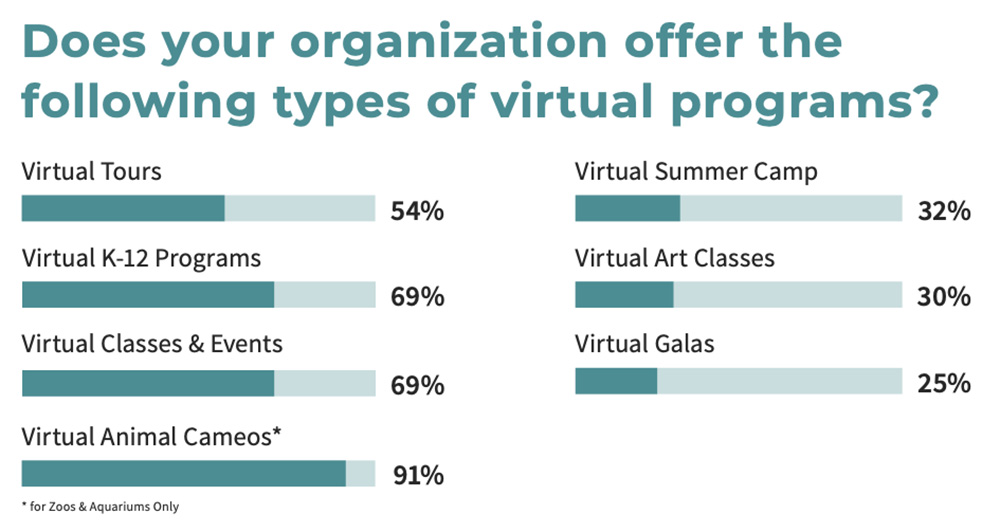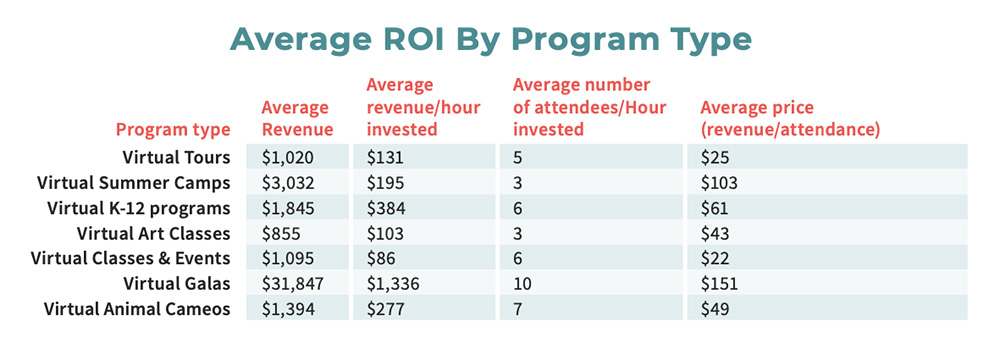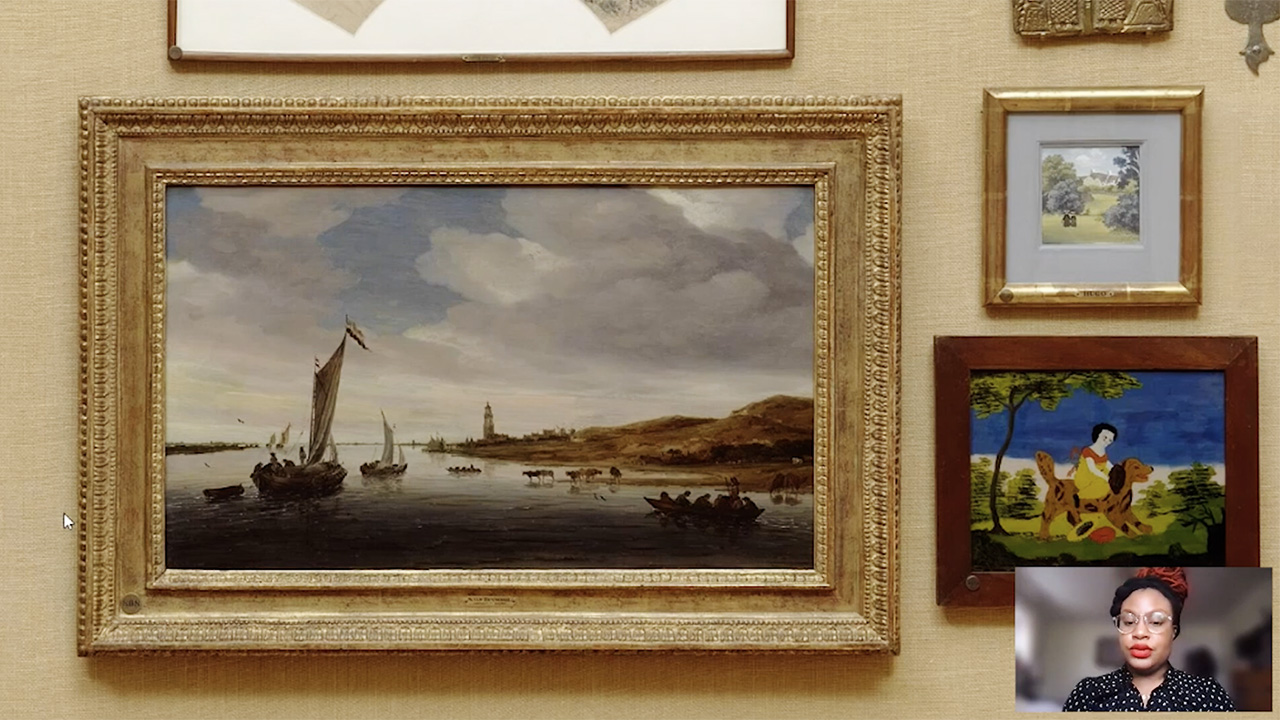Back in the waning years of the 20th century when the internet was growing popular, there was a stream of cultural thought that pushed against institutions having an online presence. Doing so, the argument ran, would disincentivize onsite visitors. The notion seems preposterous and curmudgeonly after a year of enjoying Renaissance paintings, zoo keeper spiels, and glitzy galas via internet browser.
Even so, pre-pandemic, few cultural organizations prioritized digital content. If the first realization of 2020 was the sector’s ability to create compelling content that had an audience, the second was that doing so opened up an entirely new revenue channel. Generating revenue via virtual programming may be in its infancy, but nearly 50 percent of the 500 cultural stakeholders interviewed in The Impact of Virtual Programs on Revenue Generation for Cultural Organizations, the latest report from culture innovation startup Cuseum, stated that monetization was a priority in 2021. (Read our report takeaways)
Some measures, such as virtual galas, may prove to be stopgap measures for desperate times. Others, such as virtual tours and entirely new digital-only membership schemes, are undoubtedly here to stay. Here, Jing Culture & Commerce discusses the report with the team at Cuseum.
The monetization of virtual programs is relatively new to museums. What were your biggest surprises?
Brendan Ciecko: We were surprised to see nearly half of those surveyed recognize revenue generation through virtual channels as a major priority. The sector is still in the very early days of cultivating digital revenue streams, so it was promising to see a general awareness and understanding of the financial opportunities that virtual content and programs can offer.

While only 40 percent of museum directors considered digital “highly important” pre-COVID, 92 percent of institutions now offer virtual programs. Image: Cuseum
One of the biggest digital developments has been the adoption of virtual memberships. How are organizations navigating a new relationship with non-members?
Maddie Taylor: Some museums offer members earlier access to premium virtual content and later release it to general audiences. Many organizations offer virtual events free or discounted to members, but also open to other audiences for a fee. Others incentivize membership by making some programs exclusive to members. This is an evolving conversation and museums are determining the best way to balance serving members and their general audiences.
Virtual tours were broadly adopted in the culture sector and averaged around $1,000 in revenue. What are the keys to boosting ROI?
Ciecko: Outside of marketing that can increase the visibility of virtual tours and a seamless e-commerce experience, we believe there are opportunities to make online events more interactive and social. There are many emergent virtual platforms that facilitate live social events – these could influence the way virtual tours are crafted, and enable the word-of-mouth and social mechanics that are more common in other industries.

According to the survey, virtual tours by art museums proved to be the most successful as compared to other types of organizations, earning as much as three times more revenue per tour. Image: Cuseum
Virtual galas proved surprisingly successful fundraisers, particularly for art museums. Is there a future for them?
Ciecko: We believe virtual galas were a temporary solution with temporary, yet surprising, success. This was likely due to philanthropic motivations and expectations more than anything else. That said, I could imagine physical events in the future where the honored guest is there virtually. This gets past scheduling challenges, cost of travel, and opens up new options.
Beyond the seven virtual programs outlined in the report, are there others you expect to be explored?
Ciecko: Interesting things are happening with augmented and virtual reality as a means of remote engagement, but we haven’t seen critical mass or much in the way of monetization yet. It’s also worth noting that Clubhouse recently introduced a tipping functionality, but we steered clear of anything that wasn’t tried and true. Additionally, underneath the umbrella of virtual tours, there have been a few museums such as Hastings Contemporary and Van Abbemuseum offering ticketed, telepresence, robot-led tours – in the name of accessibility for all, I’d love to see more of that!



